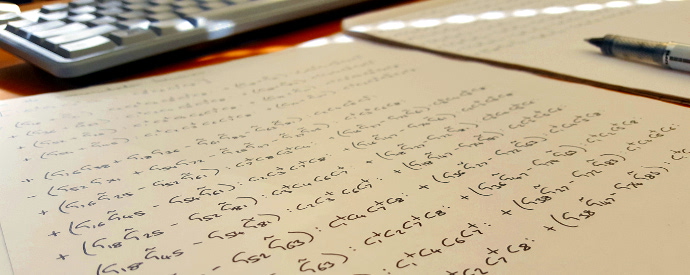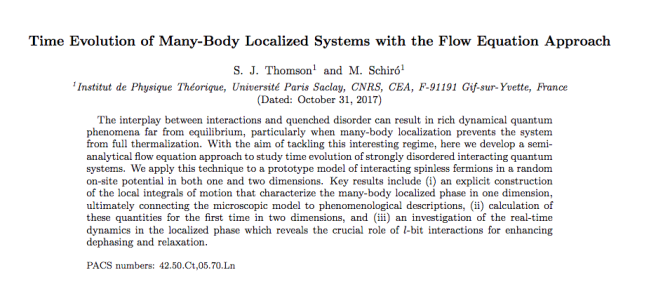Research Update: Many-Body Localisation in 2 Dimensions
It’s been a while since I last blogged – again – but today I’m back with a quick update on some research progress.

A while back, I posted about a new preprint that we’d just uploaded to arXiv, the repository where physicists routinely post drafts of their new papers before they go through peer review and are considered for publication in a ‘proper’ journal. The paper was about some new work on many-body localisation (MBL) where we developed a new technique to look at the time-dependence of MBL systems.
Well, after a few more months of thinking and working, not to mention having presented it at several conferences and talked about it with lots of people in the field, we’re back with a new and updated version of that preprint! You can find it here.

The new version of our paper! (So sue me, I didn’t have any good images for this post…)
In the new version, we’ve gotten significantly more ambitious. Rather than studying system sizes of length L=36 particles as we initially did, we now present results for L=100. Most alternative techniques out there (such as exact diagonalisation) are limited to around 20-30 particles, so we’re now presenting much larger simulations than almost any other method can handle. Frankly, the only reason we don’t go even larger is that it doesn’t significantly alter the results: I don’t even know for sure what the limit is.
Moreover, because this technique can handle such large system sizes, it can also handle two-dimensional grids of particles: if you can only simulate, say, 25 particles in total then you can only simulate a grid of 5×5 and that’s too small to give you any clear signatures of how a two dimensional real material would behave. This is why most studies of MBL are restricted to one-dimensional systems, e.g. quantum wires. But with our method, we can handle a grid of 12×12 (i.e. 144 particles in total) without any trouble: that’s starting to get large enough to say something interesting about MBL in two dimensions, a regime where almost no other calculation has been able to go.
To the best of my knowledge (and please do correct me in the comments if I’m wrong), no one’s yet taken a microscopic (disordered, interacting…) model in two dimensions like this and directly computed localisation properties from it – until now. We’ve found that not only does the two dimensional system display the exponential decay of “l-bit” couplings characteristic of MBL, but there are also intriguing signs of a localisation/delocalisation transition, i.e. when we tweak a parameter the material turns from an insulator into a metal. It’s early days yet and this is the only result of its type to my knowledge, but it’s one I find quite exciting, and I think it’s a good indication that the method we’ve developed can address questions that no other method can.
That’s not to mention the main result of the original draft, which was that we managed to probe the non-equilibrium dynamics after a quench (a sudden change of parameters) for large systems of length L=64, again much larger than any other method capable of studying the dynamics. Since the original draft, I’ve also gone over the computer code with a fine-toothed comb and substantially improved the speed at which it runs.
So, there you have it: the method presented in our newly updated preprint is i) capable of studying system sizes an order of magnitude larger than many competing numerical techniques, ii) is the only method I know of that can currently handle two-dimensional MBL systems, and iii) can be used to study the non-equilibrium dynamics of such systems after quenches. I also have to stress at this point that this is still a preprint and has not yet gone through peer review, so I’d encourage you to read both the paper itself and this post with a critical mindset.
While the method has its limitations, and I do hope that future work (both mine and others) can push these limitations further, I think the flow equation approach to studying disordered, interacting systems is extremely promising. Perhaps if the community can come together to find a compromise between the numerically exact methods (restricted to small system sizes) and our more analytic method (restricted to the localised phase), we’ll have a technique on our hands that can solve all our problems.
Hey, I can dream, right?
If any of this interests you, please do read the paper and feel free to comment and share. All code and data is, at this stage, available on request – once the paper is finalised and if there’s any demand for it, we can see about making it more widely available. Until then, keep your fingers crossed for a smooth and constructive peer review process!
Update: This work was published in Physical Review B: Rapid Communications in February 2018.
